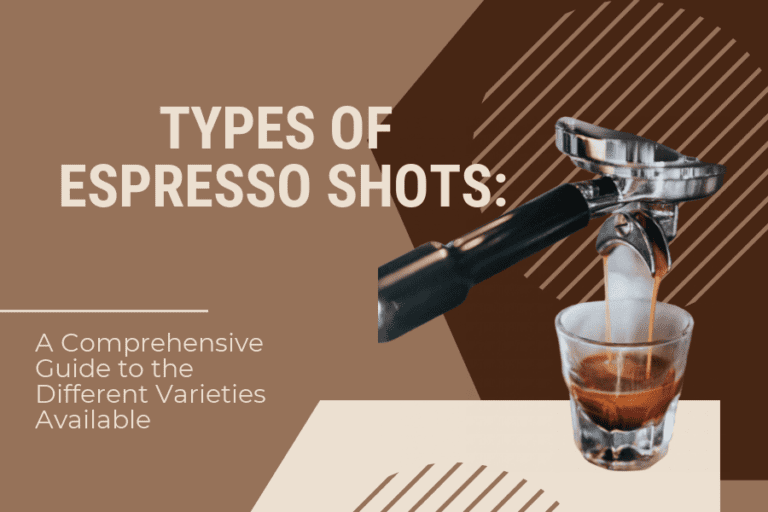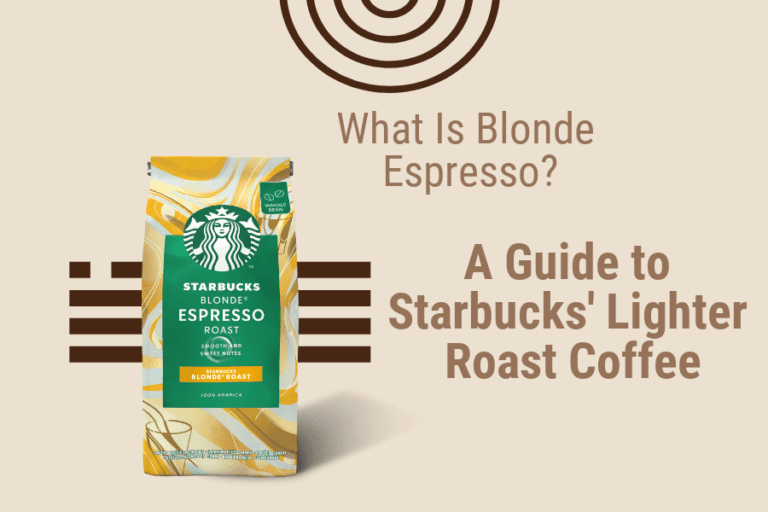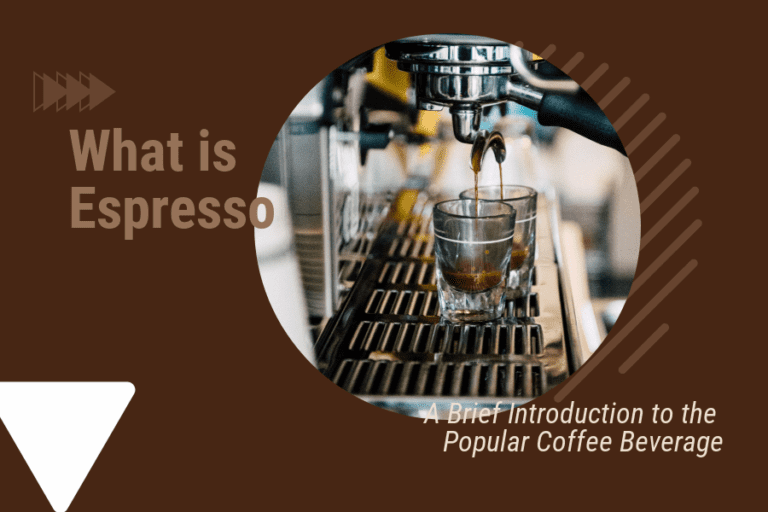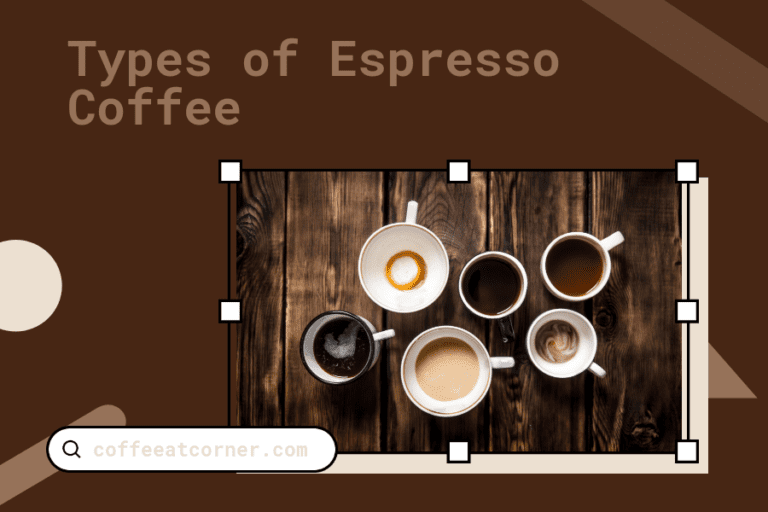Espresso vs Cappuccino: Understanding the Differences and Similarities
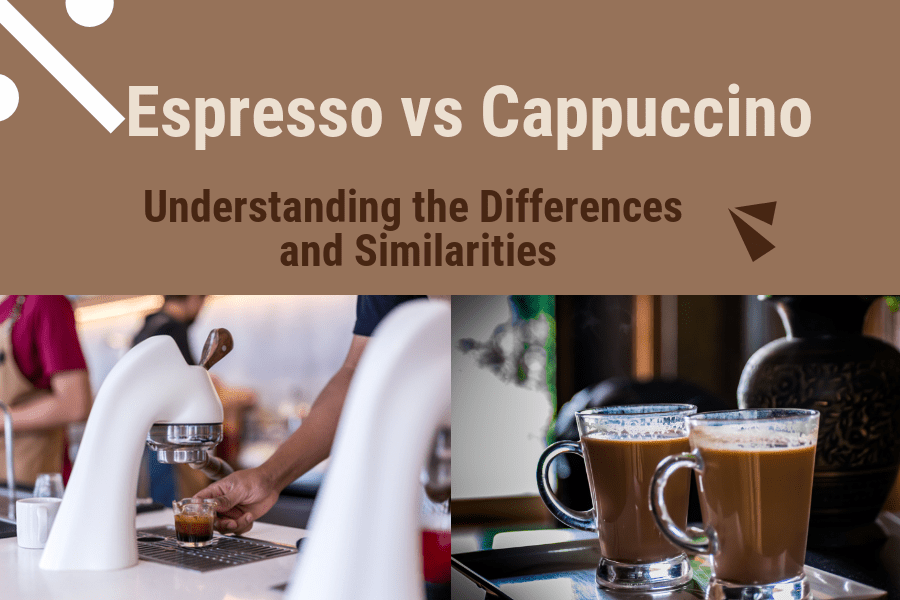
Espresso and cappuccino are two of the most popular coffee drinks in the world. Both are made with espresso shots, but they differ in terms of milk and foam content. Espresso is a concentrated coffee drink made by forcing pressurized hot water through finely ground coffee beans. It has a thick, creamy consistency and a strong, bold flavor that many coffee lovers enjoy. Cappuccino, on the other hand, is made by combining espresso shots with steamed milk and a layer of foam on top.
While both drinks have their loyal fans, there are some key differences between espresso and cappuccino that are worth exploring. For one, cappuccino is a milkier and sweeter drink than espresso, making it a popular choice for those who prefer a milder coffee taste. Additionally, cappuccino is often served with a sprinkle of cocoa powder or cinnamon on top, adding an extra layer of flavor to the drink.
Despite their differences, espresso and cappuccino are both beloved coffee drinks that have stood the test of time. Whether you prefer the bold, concentrated flavor of espresso or the creamy sweetness of cappuccino, there’s no denying that both drinks are an important part of coffee culture around the world.
What is Espresso?
Espresso is a concentrated form of coffee that is made by forcing hot water through finely ground coffee beans. It is made using an espresso machine, which uses high pressure to extract the coffee oils and flavors from the beans. Espresso is typically served in small, demitasse cups and is known for its strong, bold flavor and rich crema.
The crema is the layer of foam that forms on top of an espresso shot. It is created by the high pressure used to extract the coffee, and it is a sign of a well-made espresso. The crema adds a silky texture to the espresso and helps to enhance the flavor.
Espresso is the base for many popular coffee drinks, including cappuccinos, lattes, and Americanos. It is also enjoyed on its own, often as a quick pick-me-up or after-dinner drink.

What is Cappuccino?
Cappuccino is a popular Italian coffee beverage that is made with espresso, steamed milk, and milk foam. The drink is named after the Capuchin friars, who wore brown robes that resemble the color of the coffee when mixed with milk.
The traditional cappuccino is a 6-ounce drink that consists of one shot of espresso, one-third steamed milk, and one-third milk foam. The espresso is brewed first, and then the steamed milk is added to the espresso. Finally, the milk foam is spooned on top of the drink.
Cappuccino is often served with a sprinkle of cocoa powder or cinnamon on top, which adds a touch of sweetness and aroma to the drink. It is typically consumed in the morning or early afternoon in Italy, but it has become a popular beverage worldwide and is now enjoyed at any time of the day.
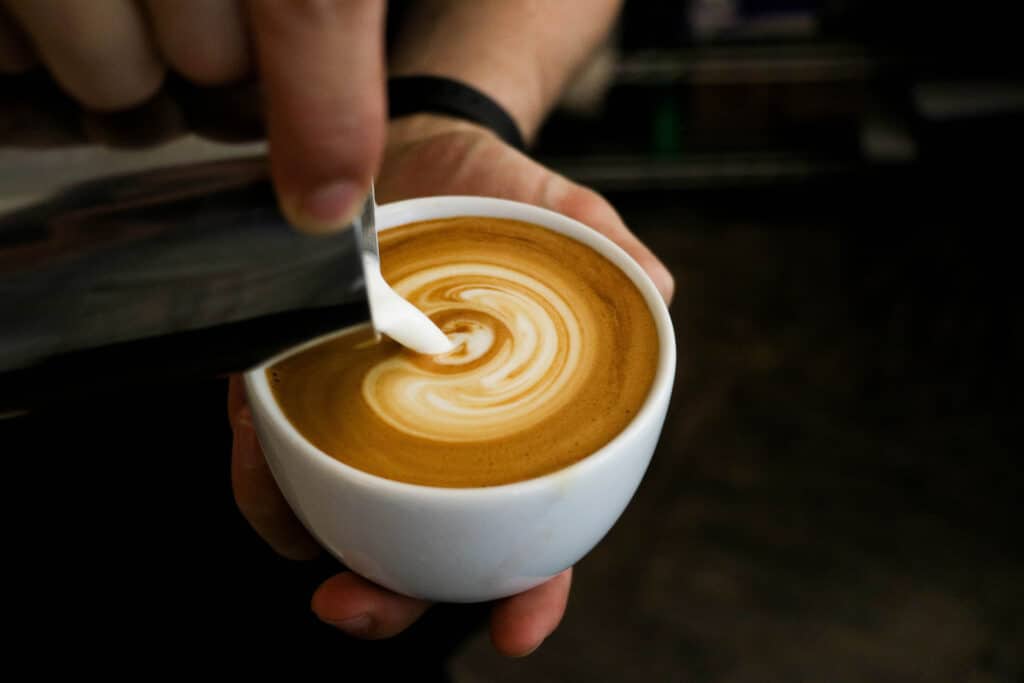
Espresso vs Cappuccino: Differences
Espresso and cappuccino are two of the most popular coffee drinks in the world. While they may look similar, they are actually quite different. Here are some of the main differences between espresso and cappuccino:
- Ingredients: Espresso is made with finely ground coffee beans and hot water, while cappuccino is made with espresso, steamed milk, and milk foam.
- Size: Espresso is typically served in a small cup, while cappuccino is served in a larger cup.
- Strength: Espresso is stronger and more concentrated than cappuccino.
- Texture: Espresso has a thick, syrupy texture, while cappuccino has a creamy texture due to the steamed milk.
- Flavor: Espresso has a strong, bold flavor, while cappuccino has a milder, sweeter flavor.
Overall, the main differences between espresso and cappuccino come down to their ingredients, size, strength, texture, and flavor. Depending on your taste preferences, you may prefer one over the other or enjoy both equally.
Taste
Espresso and cappuccino are both popular coffee drinks with distinct tastes. Espresso is a strong and intense coffee with a bold flavor that is often described as bitter or nutty. The taste of espresso is dependent on the type of coffee bean, roast level, and brewing method used. When prepared correctly, espresso has a rich and creamy texture with a thick layer of crema on top.
Cappuccino, on the other hand, is a milder coffee drink that combines espresso with steamed milk and milk foam. The taste of cappuccino is creamy and sweet, with a smooth texture and a hint of bitterness from the espresso. The ratio of espresso to milk can vary, but a traditional cappuccino is made with equal parts espresso, steamed milk, and milk foam.
Overall, the taste of espresso and cappuccino can vary depending on the individual’s preferences and the quality of the ingredients used. Some people prefer the strong and bold flavor of espresso, while others enjoy the creamy and sweet taste of cappuccino. Ultimately, the choice between the two comes down to personal preference.
Ingredients
Espresso and cappuccino are two of the most popular coffee drinks in the world. Both drinks have a unique taste, aroma, and texture, which makes them distinct from each other. Here are the ingredients that make these two drinks unique:
Espresso Ingredients
- Ground coffee beans
- Water
Espresso is made by forcing hot water through finely ground coffee beans. The coffee beans used for espresso are usually roasted darker than those used for other coffee drinks, which gives espresso its distinctive taste and aroma. The amount of coffee used for a shot of espresso is typically 7 grams, and the water is heated to a temperature of around 200 degrees Fahrenheit. The result is a concentrated shot of coffee with a thick, creamy layer of foam on top, known as crema.
Cappuccino Ingredients
- Espresso
- Steamed milk
- Foamed milk
Cappuccino is made by combining equal parts of espresso, steamed milk, and foamed milk. The espresso is brewed first, and then the steamed milk and foamed milk are added to the cup. The steamed milk gives the cappuccino a creamy texture, while the foamed milk adds a layer of froth on top. The amount of milk used in a cappuccino is typically the same as the amount of espresso, which is around 1 to 2 ounces.
Overall, the ingredients used to make espresso and cappuccino are simple and straightforward. However, the way these ingredients are combined and prepared makes a big difference in the taste and texture of the final product.
Preparation
Both espresso and cappuccino require specific preparation methods to achieve their unique flavors and textures. Here’s a breakdown of how each drink is prepared:
Espresso
Espresso is made by forcing hot water through finely ground coffee beans using a high-pressure espresso machine. The machine typically uses a portafilter to hold the coffee grounds, and the water is forced through the grounds and into a small cup or shot glass.
The process of making espresso is relatively quick, with the entire shot usually taking only 20-30 seconds to pull. However, the quality of the espresso depends heavily on the type of beans used, the grind size, and the barista’s skill in tamping the grounds and controlling the water temperature and pressure.
Cappuccino
Cappuccino is made by combining espresso with steamed milk and a layer of frothed milk on top. To make a cappuccino, a barista first pulls a shot of espresso and then steams and froths the milk using a steam wand on the espresso machine.
The steamed milk is then poured over the espresso shot, followed by a layer of frothed milk on top. The ratio of espresso to milk varies depending on the size of the cappuccino, but a typical cappuccino is made with one shot of espresso and equal parts steamed milk and frothed milk.
Overall, both espresso and cappuccino require a certain level of skill and attention to detail to prepare properly. While the process of making espresso is relatively straightforward, achieving the perfect shot requires careful attention to factors like grind size and water temperature. Similarly, creating a perfectly balanced cappuccino requires skill in steaming and frothing milk to achieve the right texture and consistency.
Serving Size
When it comes to serving size, espresso and cappuccino are quite different. Espresso is typically served in small demitasse cups, which hold between 1 and 2 ounces of liquid. This small serving size is intentional, as espresso is meant to be enjoyed as a concentrated shot of coffee.
Cappuccino, on the other hand, is a larger drink that typically contains between 6 and 8 ounces of liquid. The serving size can vary depending on the establishment, but a traditional cappuccino is made up of one-third espresso, one-third steamed milk, and one-third milk foam. The larger serving size of cappuccino means that it is a more indulgent drink, meant to be sipped and savored over a longer period of time.
It’s worth noting that there are variations of both espresso and cappuccino that come in different serving sizes. For example, a double shot of espresso will be twice the size of a single shot, while a small cappuccino may be closer in size to a traditional espresso. Additionally, some establishments may offer larger or smaller cappuccinos depending on customer preference.
Ultimately, the serving size of espresso and cappuccino is a matter of personal preference. Some people enjoy the concentrated flavor of espresso in a small serving, while others prefer the creamy indulgence of a larger cappuccino. Whatever your preference, both drinks offer unique and enjoyable coffee experiences.
Caffeine Content
When it comes to caffeine content, espresso and cappuccino have different levels due to the difference in serving size and preparation methods. Espresso is a small, concentrated shot of coffee, typically containing 30-50mg of caffeine per ounce. A single shot of espresso contains about 63mg of caffeine, while a double shot contains around 125mg.
Cappuccino, on the other hand, is a larger drink that typically contains one or two shots of espresso, combined with steamed milk and foam. The milk in a cappuccino dilutes the espresso, resulting in a lower caffeine content. A single shot cappuccino contains around 63mg of caffeine, while a double shot cappuccino contains around 125mg of caffeine.
It’s worth noting that the caffeine content in espresso and cappuccino can vary depending on the type of beans used, the roast level, and the brewing method. Additionally, some coffee shops may use more or less coffee in their drinks, which can affect the caffeine content.
Which One to Choose?
Choosing between espresso and cappuccino can be a difficult decision, as both have their own unique taste and characteristics. Ultimately, the choice comes down to personal preference and what you are in the mood for. Here are a few things to consider:
- Taste: Espresso has a strong, bold flavor that is often described as rich and intense. Cappuccino, on the other hand, is a bit milder and has a creamier taste due to the addition of milk foam.
- Caffeine Content: Espresso typically has more caffeine per ounce than cappuccino, as it is a concentrated shot of coffee. However, cappuccino is still a good choice for those looking for a caffeine boost, as it contains a shot of espresso.
- Milk: If you are lactose intolerant or simply prefer non-dairy options, espresso may be the better choice as it is typically served black. However, cappuccino can be made with non-dairy milk alternatives such as almond or soy milk.
- Price: Espresso is generally less expensive than cappuccino, as it is a single shot of coffee. Cappuccino, on the other hand, requires more milk and preparation time, making it a bit pricier.
Ultimately, the choice between espresso and cappuccino comes down to personal preference. If you are looking for a strong, bold coffee flavor, espresso may be the way to go. If you prefer a creamier, milder taste, cappuccino may be more your style. Either way, both options are delicious and can be enjoyed in a variety of ways.
Conclusion
When it comes to choosing between espresso and cappuccino, it ultimately comes down to personal preference. Both drinks have their unique flavors and characteristics that can satisfy different tastes and moods.
Espresso is a strong and intense shot of coffee that is perfect for those who enjoy a quick and straightforward caffeine fix. It is also a versatile ingredient in many coffee-based drinks, such as lattes, Americanos, and macchiatos.
Cappuccino, on the other hand, is a more indulgent drink that combines espresso, steamed milk, and frothed milk to create a creamy and velvety texture. It is an excellent choice for those who enjoy a milder coffee flavor and a sweeter taste.
Ultimately, the choice between espresso and cappuccino depends on your mood, taste preferences, and the occasion. Whether you need a quick pick-me-up or a relaxing drink to savor, both espresso and cappuccino have something to offer.

